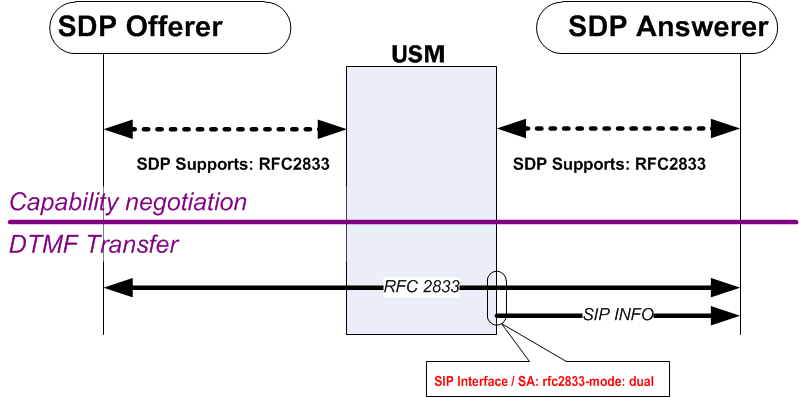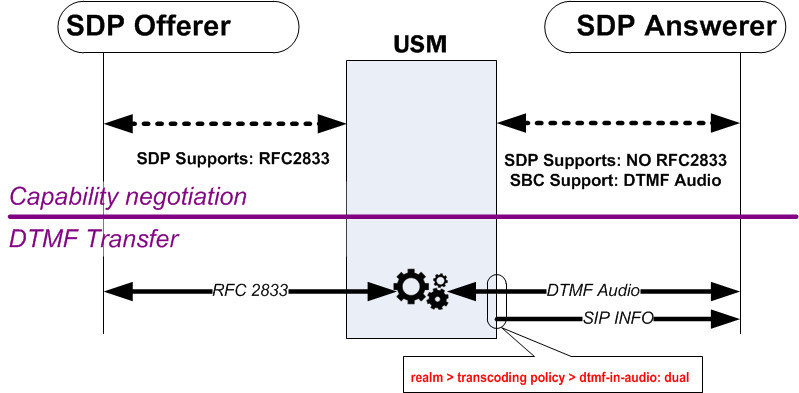Dual Mode
Dual mode is used to send both RFC 2833 and the protocol-specific DTMF indication to a UA when possible: SIP INFO from a SIP interface.
To consider dual mode scenarios, the Oracle® Enterprise Session Border Controller sets up the call SDP. At the conclusion of the capability negotiation, the Oracle® Enterprise Session Border Controller is configured to support DTMF Audio tones or RFC 2833 independently for each side of the call.
When the call leg supports RFC 2833 as the means of DTMF transfer, the Oracle® Enterprise Session Border Controller checks if the SIP interface’s (or session agent’s) RFC 2833-mode parameter is configured to dual. If it is, the Oracle® Enterprise Session Border Controller sends both RFC 2833 and SIP INFO messages to the UA on this side of the call.
Note:
Whether RFC 2833 support was initiated between the Oracle® Enterprise Session Border Controller and the UA by a codec policy or by the rfc2833-mode parameter, the Oracle® Enterprise Session Border Controller looks to the rfc-2833 parameter to consider if dual mode is supported.When the call leg supports DTMF audio tones as the means of DTMF transfer, the Oracle® Enterprise Session Border Controller checks if the codec policy’s dtmf-in-audio parameter is configured to dual. If it is, the Oracle® Enterprise Session Border Controller sends both DTMF audio tones and SIP INFOmessages to the UA on this side of the call.
P-Dual-Info Header
When the Oracle® Enterprise Session Border Controller forward both media DTMF indication and signaling based DTMF indication for the same received DTMF indication, a P-Dual-Info header is added to the forwarded signaling message. You can configure the appearance of the header with the dual-info option. The default header appearance is:
P-dual-info: true
P-Dual-Info headers are only inserted into SIP INFO messages.
Example 1
In this example, RFC 2833 is supported on the egress side of the call. The egress SIP interface or session agent’s rfc2833-mode is set to dual mode. When the Oracle® Enterprise Session Border Controller forwards RFC 2833 to the SDP answerer, it also creates and forwards a corresponding SIP INFO message toward the target.

Example 2
In this example RFC 2833 telephone-event is not supported on the egress side of the call, but DTMF audio tones are. If the Oracle® Enterprise Session Border Controller receives an RFC 2833 message, it is converted to DTMF audio tones. When the Oracle® Enterprise Session Border Controller forwards DTMF audio tones to the SDP answerer, it also creates and forwards a corresponding SIP INFO message toward the target.




